




Important Facts on Bees and Wasps
Children love to eat honey. Honey is very sweet and it is a favourite for kids.
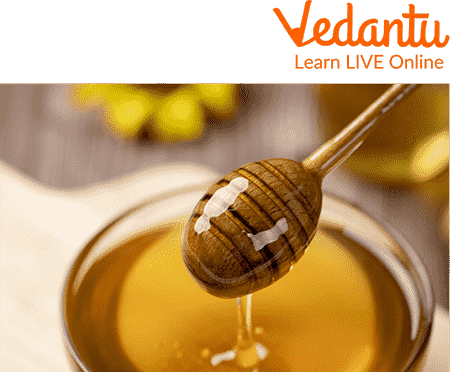
Honey
But have you ever thought about where we get honey? And the answer to this question is that we get honey from honey bees so let’s study bees in detail. But let's first look at the below picture and see what a bee looks like:
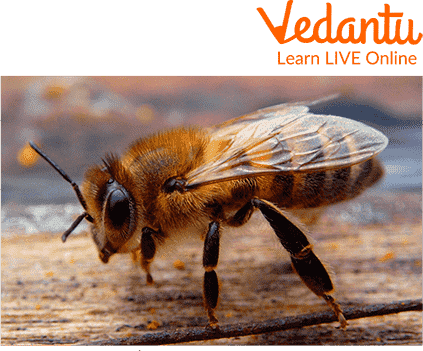
Honeybee
Bee can be defined as a black and yellow insect that lives in large groups and that makes a sweet substance called honey that we eat. It is an insect with four wings. Most bees have short, thick bodies and the body of the bee is covered with hair. Like all insects, bees also have 6 legs and 3 body parts that are head, thorax, and abdomen.
On the other hand, Wasps have yellow or black bands around the abdomen whereas bees have a more light brown-yellow colour which is the main difference between wasps and bees. In this article, we will discuss bee facts for kids, fun bee and wasp facts for kids and what do wasps eat.
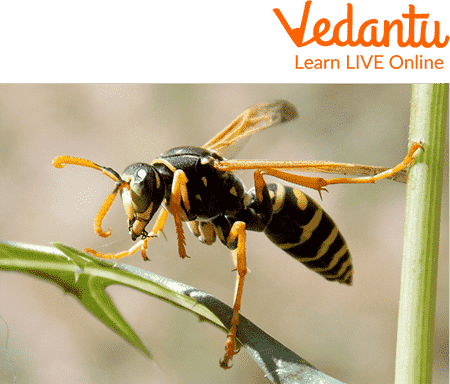
Wasp
What do Wasps Eat?
Wasps enjoy different kinds of food. The food that wasps like to eat varies depending upon the species and the age of the wasps.
Some species of wasps like to drink nectar from flowers. Some adult Wasps are carnivores and others also get their food that is high sugar content or high protein content.
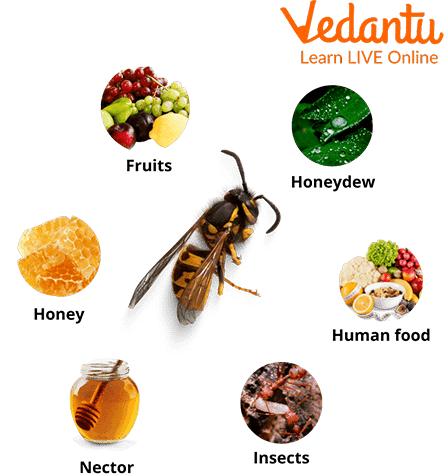
Different Foods of Wasps
Wasps also like to eat some other organisms such as insects, and spiders. Wasps can identify the smell of food using the receptors in their antennae which allow them to find nectar, also they can find dead insects and animals and in this way, they reach that place and they eat the food.
So to have food there is some sense of touch and taste which helps them to find their way and it further helps them to identify tasty food.
Wasp Life Cycle
Queen Lays Eggs :
The fertilised female Wasps queen hibernates(to be in inactive form during the winter season) during the winter season, the queen Wasps then make a nest for its survival and lay about 200 to 300 eggs in a day.
Wasps do not reuse their nest and make new nests every year.
Nest Building:
At this stage, the wasps build their nests and colonies.
The wasps chew wood material and mix it with saliva to create a paste that is used as a material to build the nest.
The egg laid inside the nest is fertilised by stored sperm by queen Wasps.
During this stage, the size of the nest gets bigger as more wasps join the colony.
Colony Expansion:
As the number of wasps born to the queen increases the queen lays her last eggs. Fertile male and female wasps emerge from these eggs. The male wasp migrates out of the nest after mating and dies.
The female wasps after mating undergo hibernation with the sperms to make another nest in the following summer so in this manner the reproduction process begins.
Colony Declination:
As the winter approaches the fertilised female's last search for another location to hibernate during the stage the nest is the biggest and all the larvae have pupate, so the worker wasps go outside the nest looking for an alternative source of food.
As winter approaches all the food sources are over and new hibernating queen wasps die.
When it’s spring the whole cycle repeats. So the cycle of wasps includes the above-mentioned steps which further keep on repeating.
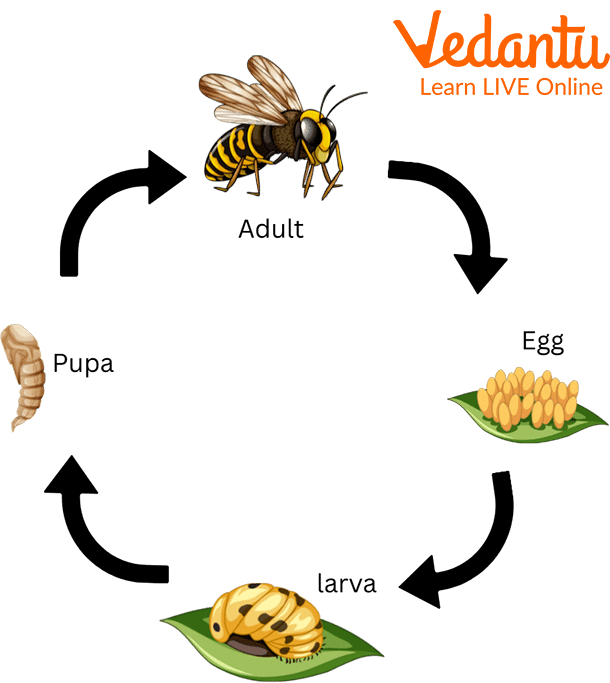
Life Cycle of a Wasp
Fun Bee and Wasp Facts for Kids
Bees have 5 eyes.
Bees fly up to 20 mph.
All worker bees are females.
Bees beat their wings 11,499 times in one minute.
Wasps can sting again and again.
Wasps create their nest from paper.
Each spring queen wasp starts a new colony.
Summary
Wasps are considered naughty of all insects as they sting humans. Wasps are good at controlling pest pollution. Furthermore, Wasps are increasingly recognized as valuable pollinators(transfer pollen grains). Apart from this, All wasps build nests, although they vary in their way of making nests. Also, studies found that wasps don't sleep as it is less active at night and during the winter female wasps are known to hibernate. Also, wasps can live without having food as they depend on certain factors. People often get confused between bees and Wasps as they have a similar shape; the only difference is the colour around the abdomen. Wasps also sting more strongly than bees. The Sting of Wasps on average is more powerful whereas the sting of bees is also painful but if it is compared to wasps it is not that bad.
FAQs on Bees and Wasps
1. What happens if you kill a wasp?
If you want to kill a wasp then, when it dies it releases a chemical that signals the rest of the Wasps. Wasps alert the other way might become more aggressive so it is best to leave us alone. When killing Wasps first of all it is not at all easy as they are quite active and they change their position very quickly but if someone kills it leaves the chemical which is the source of indication or signal for the other bees or Wasps in the colony.
2. What is the amount of honey a beehive can produce in a lifetime?
The amount of honey varies according to season and bees but On average, the honeycomb is capable of producing fifty to sixty thousand of honey. Apart from this Out of which the honey bee requires only 25 percent of honey and the remaining honey can be utilised by the beekeeper for harvesting. Furthermore, In honey bee colonies each bee has its different work and performs according to its duties. So every bee in a colony has its responsibility.
3. How is the beehive constructed by the bees?
The young worker bees make the beeswax to make the beehive. It involves a different process, furthermore, The beeswax is made through the abdomen of the bee and it further produces liquid wax which turns hard when exposed to air. Apart from this, The bees keep the wax in their mouths to maintain the working condition of the wax which constructs the honeycomb. More Wood, Cloth, Nails, and Screws are used to make beehives by honey bees. Also, different shapes of beehives are seen.





















